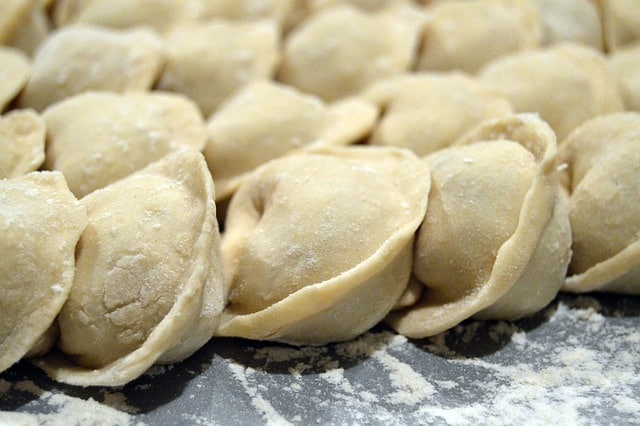On October 8, we observe International Pierogi Day, a celebration of a dish primarily associated with Poland but found on tables around the world. Known by various names and made in myriad ways, while pierogi are emblematic of Polish cuisine, their history has roots in distant China. Even today, during the Chinese New Year festivities, special pierogi are consumed in two flavors: sweet and with nuts. The former symbolizes an easy life, and the latter augurs a prosperous year ahead. How did they make their way to Poland? Native Italian and Michelin-starred chef Andrea Camastra from NUTA Restaurant – a private enthusiast of Polish pierogi – delves into the tale.
“The history of pierogi in Poland dates back centuries, deeply entrenched in the country’s culture. According to legend, Polish bishop Jacek Odrowąż became enamored with their taste during a stay in Kyiv, ensuring they found a permanent home on the banks of the Vistula. During the most severe famines, pierogi were used to feed the impoverished and homeless. Their popularity in the Middle Ages was boosted by the superstition that cottage cheese had the power to ward off evil spirits. This meant that pierogi became not just a delicious dish but also a talisman against malevolent forces,” narrates Chef Andrea Camastra. Pierogi have graced our festive tables for ages. Traditionally, they were served at weddings filled with chicken, while “knysze” were mourning pierogi. The Polish cuisine also features baked pierogi, known as “kolatki,” prepared for the New Year to honor the Slavic and pagan festival of Kolada.
The term “pierogi” is derived from the word “pir,” which in Proto-Slavic means a feast celebrated in honor of gods and spirits. Now, pierogi filled with cabbage and mushrooms, solely with mushrooms, or buckwheat groats, are typical Christmas Eve dishes. They can be found in various iterations: served alone or with borscht. “Though we’ve kind of made pierogi our own, they’re found in many forms worldwide. In Italy, you have ravioli; in Georgia, it’s chinkali; in Japan, gyoza; in India, samosa; in South American countries, empanadas; in Africa, fataya; and in China, steamed dim sum… The list goes on,” lists Chef Camastra. They vary in fillings and dough type. When making pierogi, the key to success often lies in the right kind of flour, commonly type 450. “In Poland, making pierogi is frequently a family tradition, handed down through generations. Families often gather to ‘pinch’ pierogi together, creating strong bonds. Every region has its own unique stuffing recipes. It’s no surprise then that there are over 50 different types of pierogi here,” Camastra jests.


















